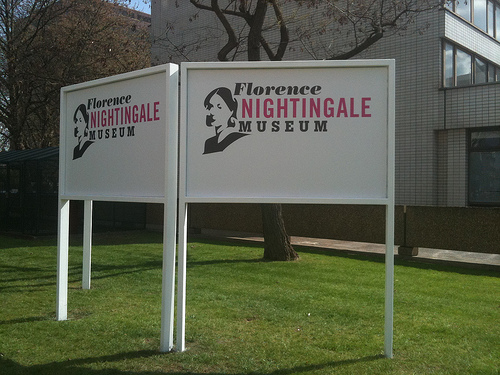The Florence Nightingale Museum
Practically everyone will recognise the name of Florence Nightingale, many more will remember her as the ‘Lady with the Lamp’. She led the care provided by a team of nurses to the wounded soldiers of the Crimean War, and it is thanks to her that the British Army did not succumb to a medical disaster. She was more than just a nurse, or even a leader of nurses though; she was an avid participant in the field of medical reform, considered by many as something of a visionary in the field. She is believed to have been the most influential women other than Queen Victoria herself that the era produced. It is thanks to Florence Nightingale that schools of nursing as we know them today were established, the very first of which was the Nightingale Training School which was based within St Thomas’ Hospital. It is also thanks to her that nursing became a respectable profession and it is in honour of her that the Florence Nightingale Museum exists.

About the Collection
Almost all of the artefacts to be found within the walls of the museum are related to the life and work of this remarkable lady. There are items from her childhood, including the slate that she used for writing as a school child, even Athena, her pet owl is amongst the items in the collection. Most wildly remembered as being the ‘Lady with the Lamp’ you will not be surprised to find that the lamp itself has a home here too. The lamp itself is a Turkish lantern which she used to light her way through the rows of the wounded each evening. Each of the items within the collection mark a moment in her lifetime and stand as testament to the incredible legacy that she left behind.
About the Museum
The Florence Nightingale Museum is located on the Lambeth Palace Road. Not only does it contain a wealth of information relating to Florence Nightingale, it is also home to the only records relating to those brave nurses who travelled to the British Military Hospital throughout the Crimean War. The Register of Nurses in the East gives the names of all two hundred and twenty nine women who served between 1854 and 1856. The register has lately been digitised and can be viewed by means of an electronic book. You will also find items from the original training school established at St Thomas’ Hospital. Many of the items that are on display have been donated to the museum, and they are always willing to look at any items that the public believe may have a link to Ms Nightingale, for possible inclusion into the collection. If you, or any member of your family have a link to the nursing profession then this is something that you need to experience as it will give you a great insight into just how far the nursing profession has progressed since those early days on the battlefield amidst the blood and bandages of the fallen.

